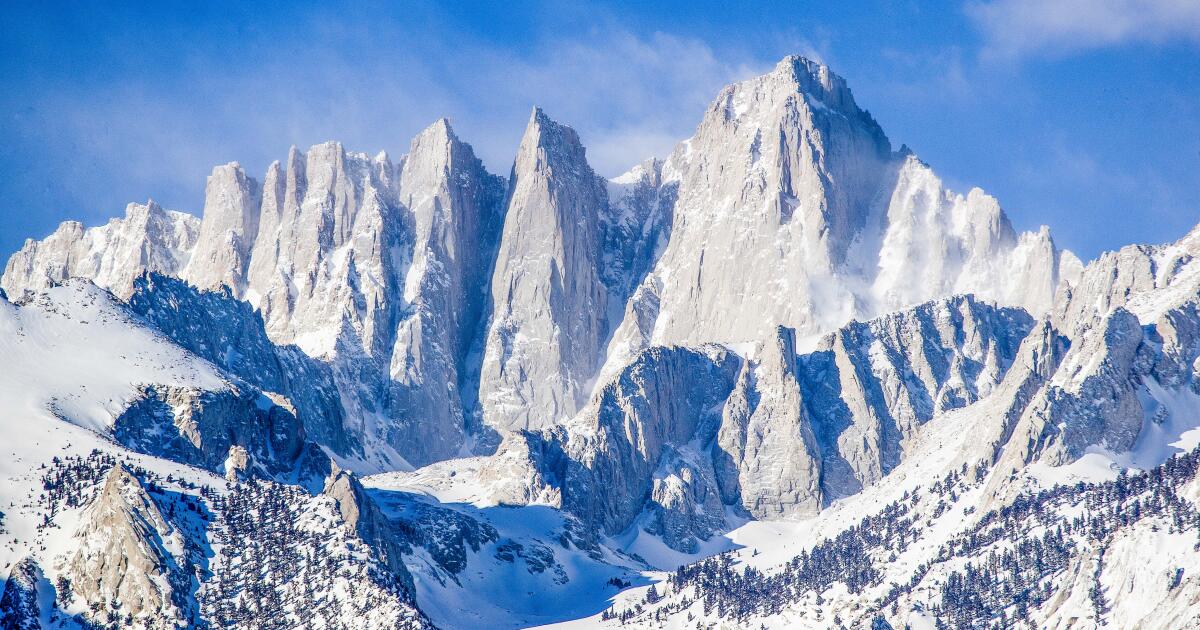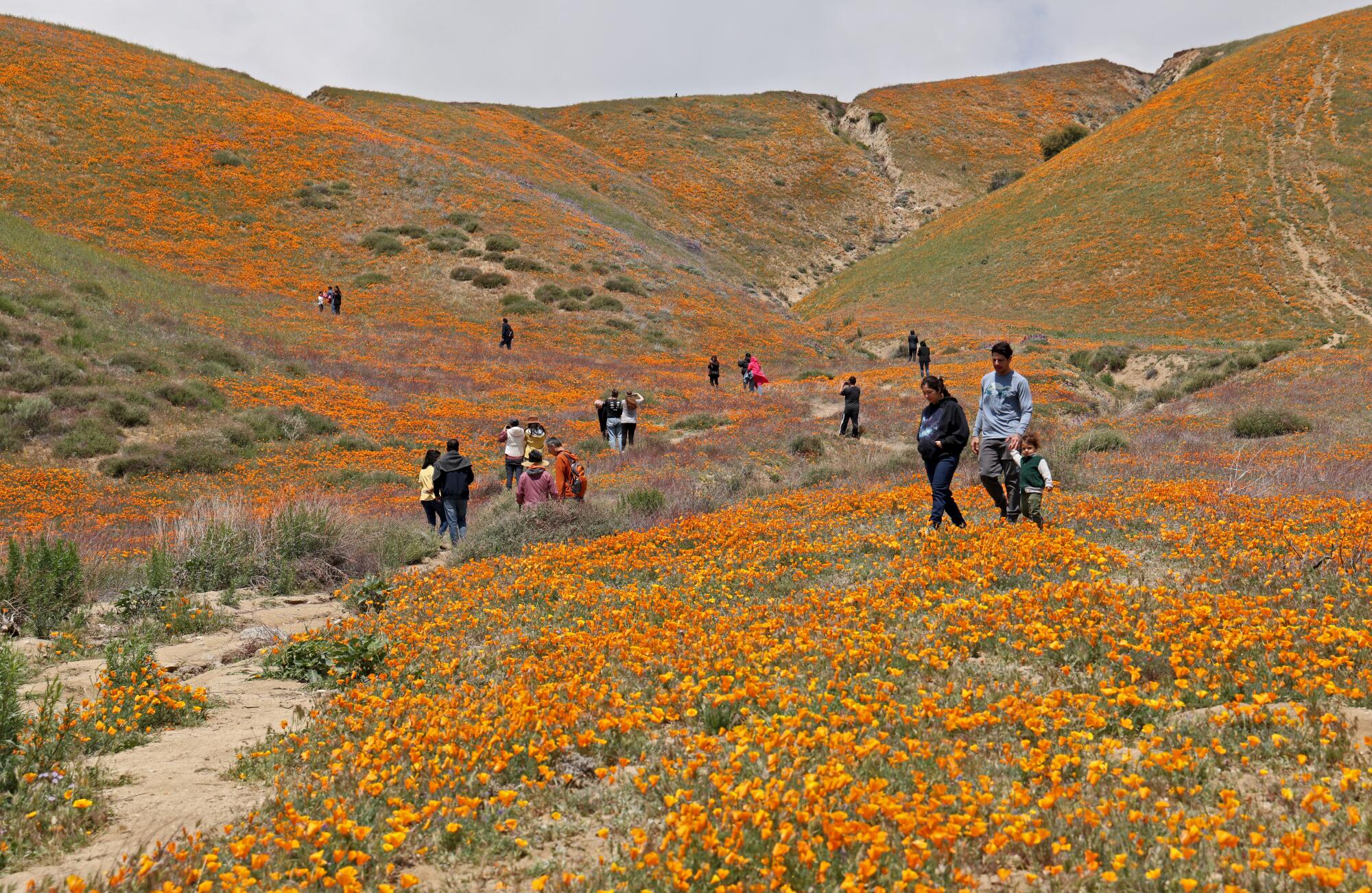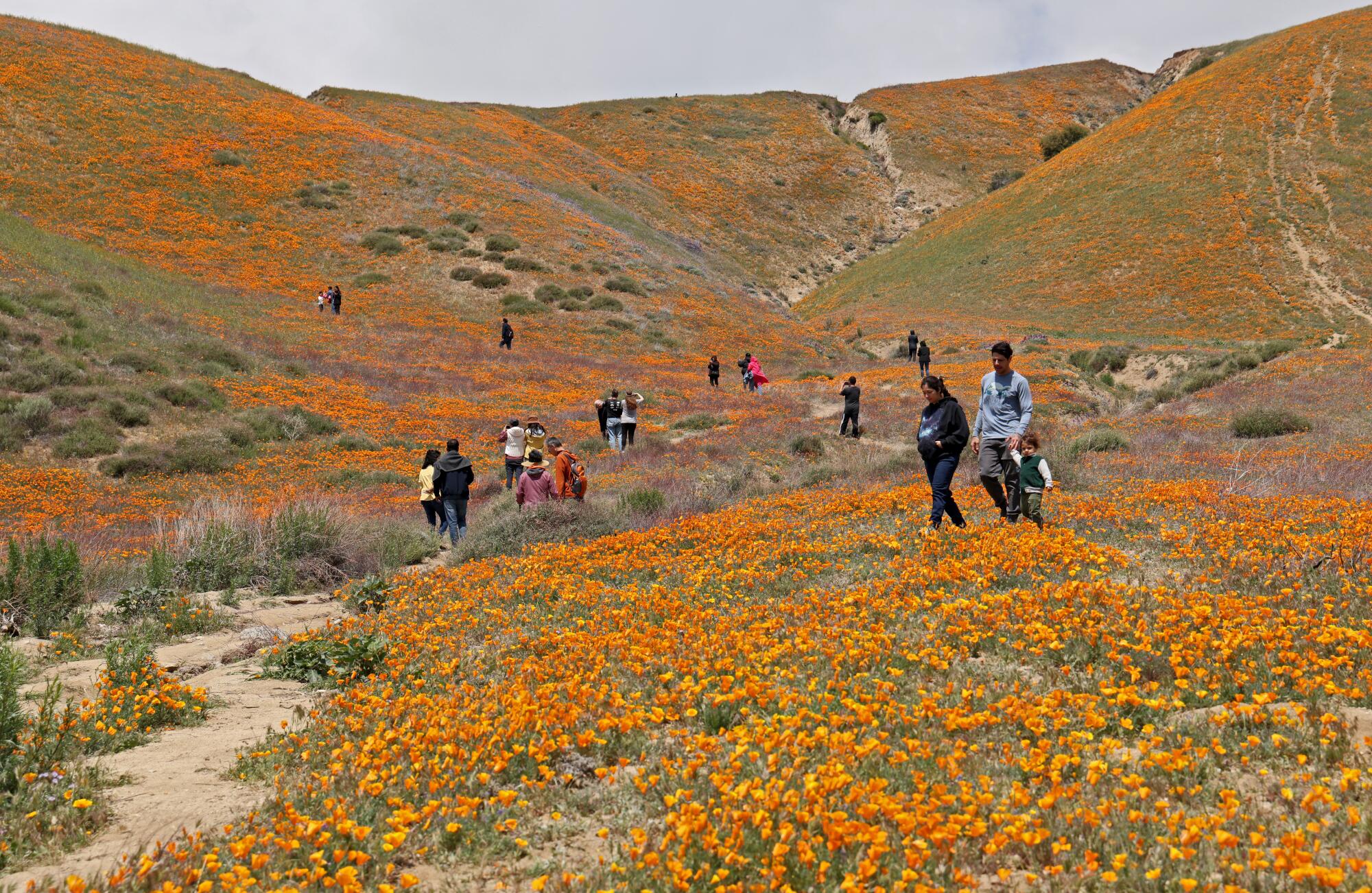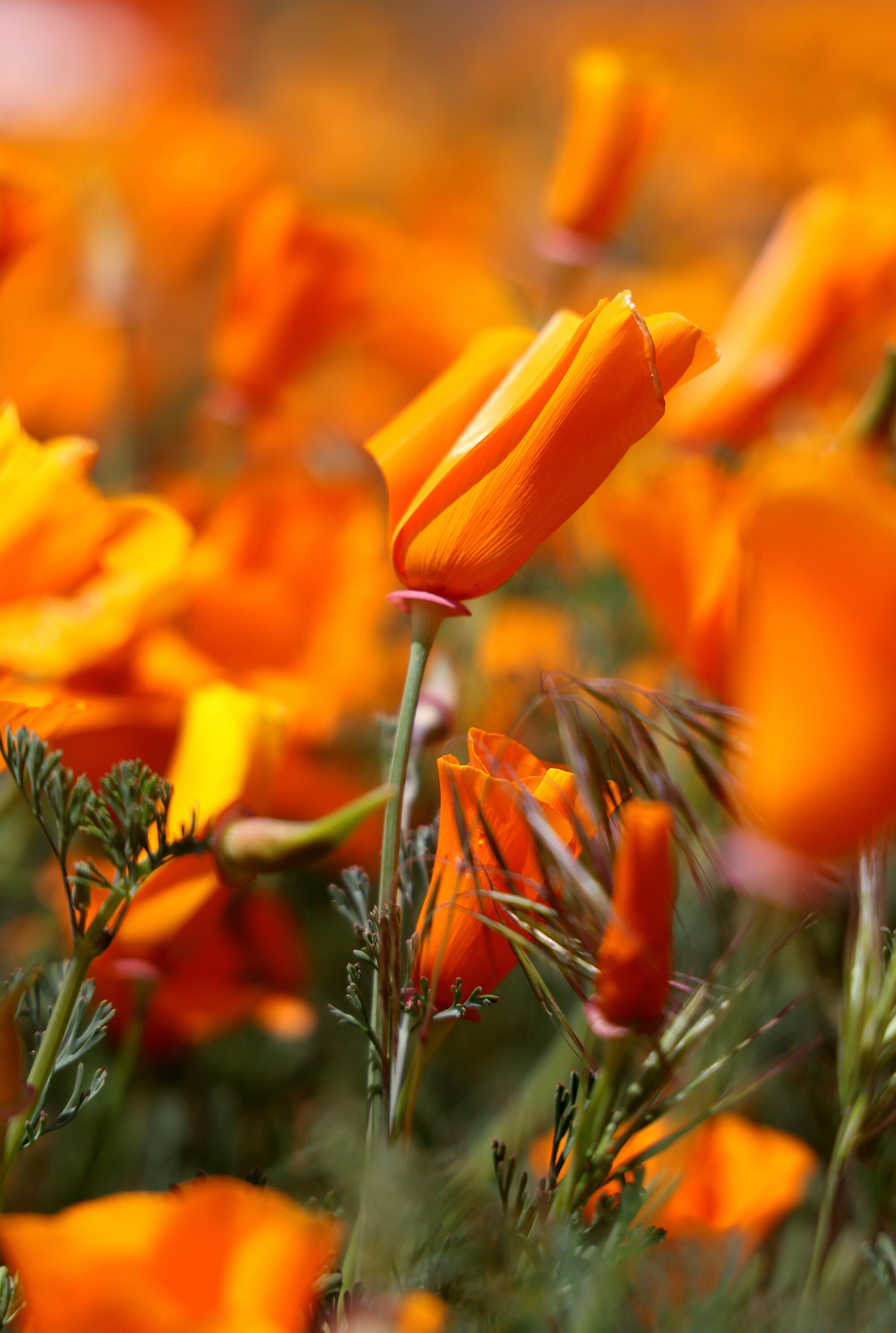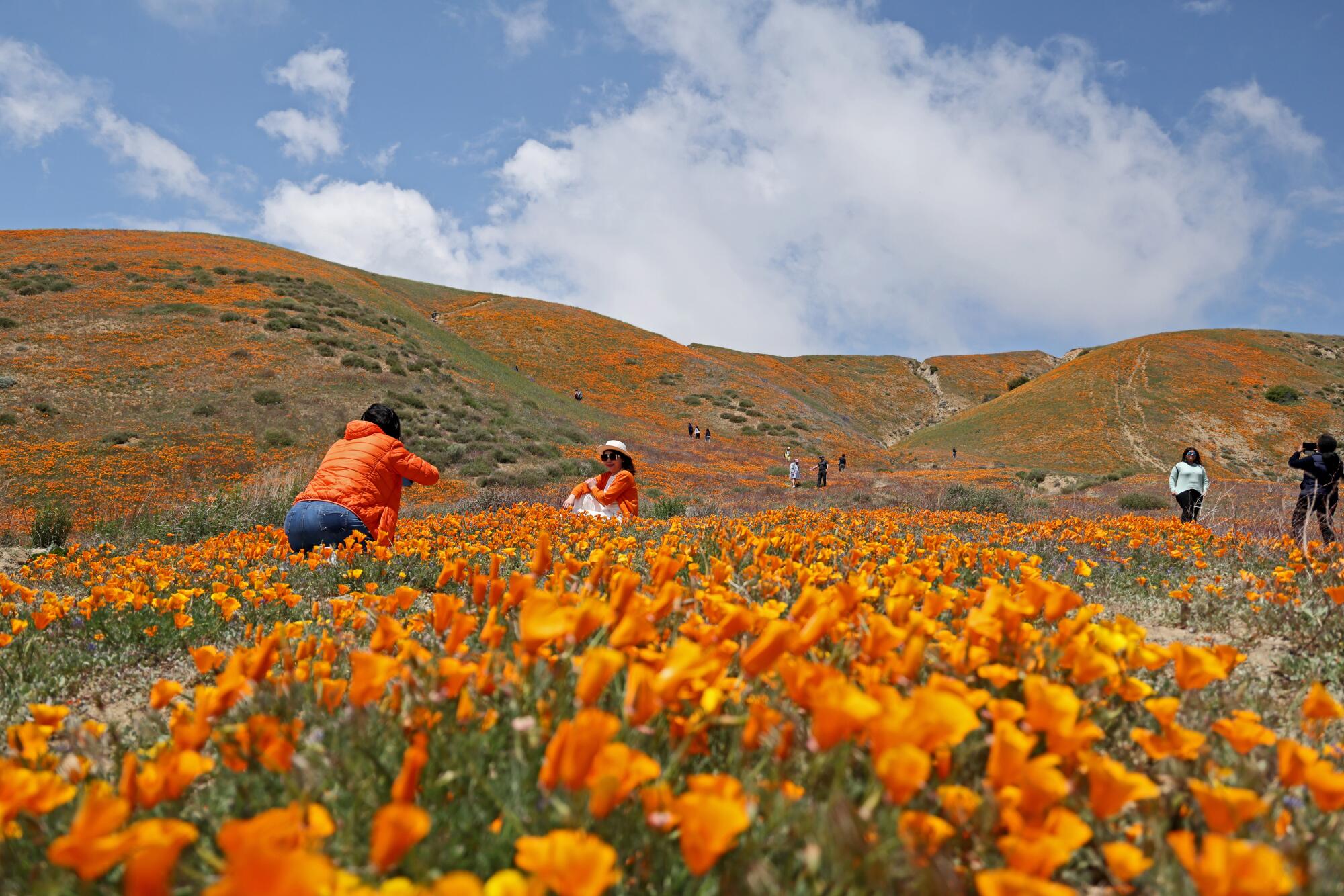Mt. Whitney claims a hiker’s life, weeks into the snow season
The return of winter has already claimed a life on the tallest mountain in the continental United States, with the death of a hiker on slippery Mt. Whitney, according to the Inyo County Sheriff’s Department.
Over the weekend, the hiker fell in the notorious “99 Switchbacks” section of the main trail, said Lindsey Stine, Community Outreach Coordinator for the Inyo County Sheriff’s Department. The switchbacks begin just above Trail Camp at almost 12,000 feet, where many hikers spend the night before making an early morning start for the 14,500-foot summit.
In the summer, when the trail is dry, the switchbacks section is a long slog, winding back and forth up two miles, and nearly 2,000 vertical feet.
When it gets a big snow, as it did earlier this month, the trail becomes buried and the whole slope becomes perilously steep.
Wes Ostgaard, who said he has climbed Mt. Whitney four times, posted on Facebook that conditions on Saturday were so treacherous he and his climbing partners decided to turn around.
“Winds were extremely intense, and with the recent snowfall, the wind was blasting snow in our faces,” Ostgaard wrote. The snow covered the trail and, in many places, rendered it “invisible,” he wrote.
When Ostgaard and his companions were descending the switchbacks they encountered the body of another hiker who had apparently fallen above a section of steel safety cables and then slid another 70 ft, or so.
“I believe it is highly unlikely he survived,” Ostgaard wrote of the hiker. “There was a fair amount of blood from [colliding with] the cables, and a lot of blood around a rock he made contact with.”
Ostgaard used Starlink to contact his father around 12:30 p.m., who then contacted emergency services. A helicopter arrived about four hours later, Ostgaard wrote.
Another hiker that day, Kirill Novitskiy, encountered the same conditions on the switchbacks on Saturday but made the “wrong decision” to keep climbing.
He made it up with just microspikes — little metal cleats that attach to the bottom of shoes and provide winter traction on flat ground — or on gentle slopes where falling would be no big deal.
But microspikes are notoriously inadequate for winter mountaineering, when a fall could be fatal.
As so often happens in the mountains, when Novitskiy returned to the steep switchbacks after a few hours traveling on relatively flat ground to and from the summit, he discovered conditions had deteriorated so much that he was in real danger and seriously under-equipped.
“I had a couple of dangerous places where the trail became a slope full of powdery snow, and it was very easy to slip off,” Novitskiy wrote on Facebook. “The worst part on the way back were the switchbacks. Almost all the trail was covered with powdery snow brought up with the wind, it was very hard to go with just microspikes.”
Near the cables he saw a pair of trekking poles with nobody around, and then encountered a group of five hikers at the bottom of the switchbacks who told him about the accident.
Anyone attempting to climb Mt. Whitney from this point on in the winter season should bring crampons — much larger spikes that attach firmly to mountaineering boots and dig deep into snow and ice to prevent falls – and an ice axe.
Experts also advise traveling in groups, and bringing a satellite communication device to contact help if anything goes wrong.
So far, the Inyo Sheriff’s Department has not released the identity of the hiker who died.
In January this year, a hiker from Texas died after attempting to climb Mt. Whitney in bad weather. His body was found at an elevation of 12,000 feet near North Fork Lone Pine Creek Trail.
In June, a 14-year-old hiker became delirious on Mt. Whitney and fell off of a 12,000-foot cliff. He survived.
